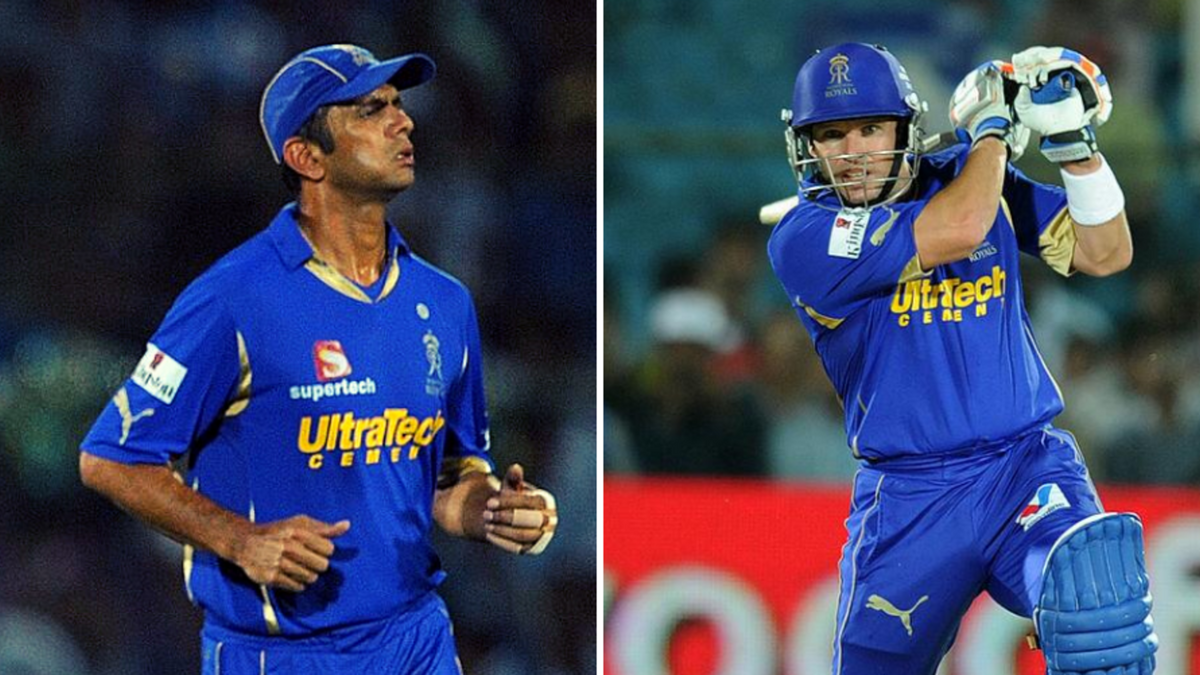
Rahul Dravid, the former captain of the IPL franchise Rajasthan Royals, has revealed how the team snared Australia’s Brad Hodge in the auction and transformed the top-order batsman into a T20 finisher in IPL.
Speaking on the Insights v Insights panel discussion about the importance of data-driven selection in cricket, Dravid explained how the Royals went for Hodge in the auction ahead of the 2012 season, despite his poor record on Indian pitches and especially against spin.
Dravid revealed how they used data to convince the batsman that he was more than suited for a role down the order. “After RCB, I moved on to RR and I got into more of a captain-coach-management role and we were looking through a lot of data and stats,” Dravid said. “At RR, we were literally a Moneyball team. We had to compete with the top teams with 40-60% of the budget. It’s not easy in an environment where everyone has a lot of data and knowledge.
“One of the things we noticed was Brad Hodge … had a phenomenal T20I record in in Australia and had probably played 5-6 IPLs, and had a very average or poor record in India. Once we looked at the data closely, we sort of realised why he was struggling in India. He was clearly a player who was very good against fast bowling, but wasn’t very good against, say, left-arm spin bowling and leg spin. But he had an incredible strength of being good against fast bowling.”
Hodge had previously represented Kolkata Knight Riders and Kochi Tuskers Kerala in the tournament, but had not batted down the order strictly in a finisher’s capacity.
“One of the things we looked at was, which is the position of the game where someone like Hodge will play only fast bowling, and we sort of looked at the last four-five overs where everyone brings their best death bowlers back into the game. We decided at that stage that we will buy him in the auction, and bat him in the last 5-6 overs in the match.
“Hodge, as you know, is an Australian batsman who is really proud of his batting ability, and he is used to batting in the top three in Australia. He was obviously resistant to this when we told him initially. But then we were able to show him data, and his success against fast bowling, and how critical it was for a team like us [that] didn’t have the firepower – like CSK had [MS] Dhoni, MI had Kieron Pollard or RCB had an AB de Villiers.
Can you match these 20 players to the correct career-best IPL score?https://t.co/rzNl7xbHzt
— Wisden India (@WisdenIndia) July 24, 2020
“In a team like that, we told him, ‘You are the best bet in the last five overs and here’s the data to show why you have been unsuccessful in the IPL and what we can do to help you become successful.'”
Hodge went on to represent the franchise for the next two seasons, played a key role in helping Royals reach the play-offs in 2013, chipping in with cameos down the order at a strike-rate of 134.40 and average of 41.85. It also helped him make a late comeback to the Australian team the following year, returning to the T20I setup after six years to feature in the 2014 T20 World Cup at the age of 39.
“He scored much fewer runs than he would have if he batted at three,” Dravid said, “but this gave us the best chance to get the best out of him.”








